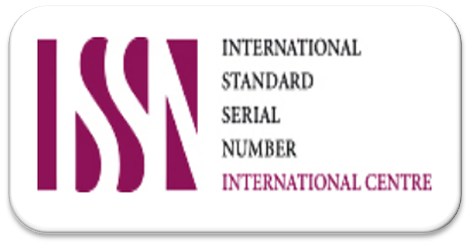Religious Values as Social Capital for Micro, Small and Medium Enterprises Facing Crisis in Kediri City
DOI:
https://doi.org/10.22373/jsai.v6i2.7827Keywords:
Religious values, social capital, MSME resilience, pandemic, KediriAbstract
This study investigates the role of religious values as a form of social capital in supporting the resilience of micro, small, and medium enterprises (MSMEs) during the COVID-19 pandemic in Kediri City, Indonesia. Using a qualitative approach, data were collected through in-depth interviews with eight MSME owners who managed to maintain their businesses throughout the crisis. The findings reveal that religious experiences and beliefs foster resilience and adaptability by encouraging persistence, community engagement, and mutual support. MSME owners relied on religious communities not only for spiritual guidance but also as practical networks for business adaptation. This study highlights the importance of integrating religious values into the conceptualization of social capital, suggesting that faith-based networks provide both psychological and material resources for business survival in times of crisis. The research offers new insights for policymakers and practitioners aiming to enhance MSME resilience through community-based and religiously-informed approaches.
References
A. del Castillo, Fides, Clarence Darro del Castillo, and Jeff Clyde Corpuz. 2021. “Dungaw: Re-Imagined Religious Expression in Response to the COVID-19 Pandemic.” Journal of Religion and Health 60(4):2285–2305. doi: 10.1007/s10943-021-01266-x.
Agustino, Leo. 2006. Dasar-Dasar Kebijakan Publik. Badung: CV Alfabeta.
Aldrich, D. P. 2010. “Fixing Recovery: Social Capital in Post-Crisis Resilience.” Journal of Homeland Security, Forthcoming.
Bentzen, J. S. 2021. “In Crisis, We Pray: Religiosity and the COVID-19 Pandemic.” Journal of Economic Behavior &organization.
Bonanno, George A. 2004. “Loss, Trauma, and Human Resilience: Have We Underestimated the Human Capacity to Thrive after Extremely Aversive Events?” American Psychologist 59(1):20–28.
Bond, A. J., P. Widdop, D. Cockayne, and ... 2022. “Prosumption, Networks and Value during a Global Pandemic: Lockdown Leisure and COVID-19.” Leisure in the Time of … 43(1–2):70–77. doi: 10.4324/9781003145301-14/prosumption-networks-value-global-pandemic-lockdown-leisure-covid-19-alexander-john-bond-paul-widdop-david-cockayne-daniel-parnell.
Borkowska, M., and J. Laurence. 2021. “Coming Together or Coming Apart? Changes in Social Cohesion during the Covid-19 Pandemic in England.” European Societies 23(sup1):618–36.
Bourdieu, P. 1986. “The Forms of Capital.” Cultural Theory: An Anthology 1:81–93.
Brandt, M. J., and P. J. Henry. 2012. “Psychological Defensiveness as a Mechanism Explaining the Relationship between Low Socioeconomic Status and Religiosity.” International Journal for the Psychology of … 22(4):321–32. doi: 10.1080/10508619.2011.646565.
Chetty, R., N. Hendren, P. Kline, and ... 2014. “Where Is the Land of Opportunity? The Geography of Intergenerational Mobility in the United States.” The Quarterly Journal of … 129(4):1553–1623.
Ćosić, K., S. Popović, M. Šarlija, and I. Kesedžić. 2020. “Impact of Human Disasters and COVID-19 Pandemic on Mental Health: Potential of Digital Psychiatry.” Psychiatria Danubina 32(1):25–31.
Ding, Wenzhi, Ross Levine, Chen Lin, and Wensi Xie. 2021. “Corporate Immunity to the COVID-19 Pandemic.” Journal of Financial Economics 141(2):802–30. doi: 10.1016/j.jfineco.2021.03.005.
Ellison, Christopher G., and Linda K. George. 1994. “Religious Involvement, Social Ties, and Social Support in a Southeastern Community.” Journal for the Scientific Study of Religion 33(1):46. doi: 10.2307/1386636.
Farboodi, Maryam, Gregor Jarosch, and Robert Shimer. 2021. “Internal and External Effects of Social Distancing in a Pandemic.” Journal of Economic Theory 196. doi: 10.1016/j.jet.2021.105293.
Ferlander, Sara. 2003. “The Internet, Social Capital and Local Community.” Language 437.
Garelli, F. 2020. “Virus e Religiosità Degli Italiani.” Settimana News.
Gecewicz, Claire. 2020. “Few Americans Say Their House of Worship Is Open..” Pew Research Center.
Grindle, Merilee S. 1980. Politics and Policy Implementation in the Third World. Princeton University Press.
Guiso, Luigi, Paola Sapienza, and Luigi Zingales. 2004. “The Role of Social Capital in Financial Development.” American Economic Review 94(3):526–56.
Helliwell, John F., Haifang Huang, and Shun Wang. 2014. “Social Capital and Well-Being in Times of Crisis.” Journal of Happiness Studies 15(1):145–62. doi: 10.1007/s10902-013-9441-z.
Higgins-Desbiolles, Freya. 2020. “Socialising Tourism for Social and Ecological Justice after COVID-19.” Tourism Geographies 22(3):610–23. doi: 10.1080/14616688.2020.1757748.
Höllinger, Franz, and Johanna Muckenhuber. 2019. “Religiousness and Existential Insecurity: A Cross-National Comparative Analysis on the Macro- and Micro-Level.” International Sociology 34(1):19–37. doi: 10.1177/0268580918812284.
Immerzeel, Tim, and Frank Van Tubergen. 2013. “Religion as Reassurance? Testing the Insecurity Theory in 26 European Countries.” European Sociological Review 29(2):359–72.
Jaziri, R., and M. S. Miralam. 2021. “The Impact of Crisis and Disasters Risk Management in COVID-19 Times: Insights and Lessons Learned from Saudi Arabia.” Ethics, Medicine and Public Health 18. doi: 10.1016/j.jemep.2021.100705.
Kawachi, Ichiro, I. V Subramanian, and Daniel Kim. 2008. Social Capital and Health.
Kawachi, Ichiro, and S. V Subramanian. 2006. “Measuring and Modeling the Social and Geographic Context of Trauma: A Multilevel Modeling Approach.” Pp. 195–203 in Journal of Traumatic Stress. Vol. 19. Wiley Online Library.
Kediri, B. P. S. Kota. 2022. Kota Kediri Dalam Angka. Kediri.
Kementerian Keuangan Republik Indonesia. 2021. Program Pemulihan Ekonomi Nasional (PEN).
Klinenberg, Eric. 2003. “Review of Heat Wave: Social Autopsy of Disaster in Chicago.” New England Journal of Medicine 348(7):666–67. doi: 10.1056/nejm200302133480721.
Knack, Stephen, and Philip Keefer. 1997. “Does Social Capital Have an Economic Payoff? A Cross-Country Investigation.” Quarterly Journal of Economics 112(4):1251–88. doi: 10.1162/003355300555475.
Knowles, Stephen. 2007. “Is Social Capital Part of the Institutions Continuum and Is It a Deep Determinant of Development?” Pp. 197–223 in Advancing Development. Springer.
Ledogar, Robert J., and John Fleming. 2008. “Social Capital and Resilience: A Review of Concepts and Selected Literature Relevant to Aboriginal Youth Resilience Research.” Pimatisiwin 6(2):25–46.
Leite, Higor, Claire Lindsay, and Maneesh Kumar. 2021. “COVID-19 Outbreak: Implications on Healthcare Operations.” TQM Journal 33(1):247–56. doi: 10.1108/TQM-05-2020-0111.
Lim, Chaeyoon, and Robert D. Putnam. 2010. “Religion, Social Networks, and Life Satisfaction.” American Sociological Review 75(6):914–33. doi: 10.1177/0003122410386686.
Lin, N. 2002. Social Capital: A Theory of Social Structure and Action. Vol. 19. Cambridge University Press.
Ludvigson, Sydney C., Sai Ma, and Serena Ng. 2020. “COVID-19 and the Macroeconomic Effects of Costly Disasters.” National Bureau of Economic Research (26987):1--24.
Makridis, Christos A., Byron Johnson, and Harold G. Koenig. 2021. “Does Religious Affiliation Protect People’s Well-Being? Evidence from the Great Recession after Correcting for Selection Effects.” Journal for the Scientific Study of Religion 60(2):252–73. doi: 10.1111/jssr.12700.
McFadden, Susan H., and Kenneth I. Pargament. 1998. “The Psychology of Religion and Coping.” Journal for the Scientific Study of Religion 37(2):368. doi: 10.2307/1387534.
Moleong, Lexy J. Moleong. 2017. Metodologi Penelitian Kualilatif (Edisi Revisi). Cet.36. Bandung: PT Remaja Rosdakarya.
Molteni, Francesco, Riccardo Ladini, Ferruccio Biolcati, Antonio M. Chiesi, Giulia Maria Dotti Sani, Simona Guglielmi, Marco Maraffi, Andrea Pedrazzani, Paolo Segatti, and Cristiano Vezzoni. 2021. “Searching for Comfort in Religion: Insecurity and Religious Behaviour during the COVID-19 Pandemic in Italy.” European Societies 23(S1):S704–20. doi: 10.1080/14616696.2020.1836383.
Nashori, Fuad, and Rachmy Diana. 2002. Mengembangkaan Kreatifitas Dalam Perspektif Psikologi Islami,. Jogjakarta: Menara Kudus.
Nasution, Fauziah, Lili Yulia Anggraini, and Khumairani Putri. 2022. “Pengertian {Pendidikan}, {Sistem} {Pendidikan} {Sekolah} {Luar} {Biasa}, Dan {Jenis}-{Jenis} {Sekolah} {Luar} {Biasa}.” Jurnal Edukasi Nonformal 3(2):422–27.
Nayak, Aditi, Shabatun J. Islam, Anurag Mehta, Yi-An Ko, Shivani A. Patel, Abhinav Goyal, Samaah Sullivan, Tene T. Lewis, Viola Vaccarino, Alanna A. Morris, and Arshed A. Quyyumi. 2020. “Impact of Social Vulnerability on COVID-19 Incidence and Outcomes in the United States.” MedRxiv : The Preprint Server for Health Sciences. doi: 10.1101/2020.04.10.20060962.
Nicola, M., Z. Alsafi, C. Sohrabi, A. Kerwan, A. Al-Jabir, C. Iosifidis, and R. ...& Agha. 2020. “The Socio-Economic Implications of the Coronavirus Pandemic (COVID-19): A Review.” International Journal of … 78:185–93.
Norris, Pippa, and Ronald Inglehart. 2013. Sekularisasi Ditinjau Kembali: Agama Dan Politik Di Dunia Dewasa Ini, Jilid 2. Vol. 53. Pustaka Alvabet.
Nugroho, Riant. 2006. Kebijakan Publik Formulasi, Implementasi Dan Evaluasi. Vol. 8.
Olena, D., T. Liubov, and R. Nadiia. 2020. “SOCIO-DEMOGRAPHIC PROCESSES IN THE ECONOMIC SYSTEMS MANAGEMENT.” … in the Context of Modern Global … 173.
Pitas, Nicholas, and Colin Ehmer. 2020. “Social Capital in the Response to COVID-19.” American Journal of Health Promotion 34(8):942–44. doi: 10.1177/0890117120924531.
Plümper, Thomas, and Eric Neumayer. 2022. “The Politics of Covid-19 Containment Policies in Europe.” International Journal of Disaster Risk Reduction 81. doi: 10.1016/j.ijdrr.2022.103206.
Poortinga, Wouter. 2012. “Community Resilience and Health: The Role of Bonding, Bridging, and Linking Aspects of Social Capital.” Health and Place 18(2):286–95. doi: 10.1016/j.healthplace.2011.09.017.
Purwanto, Antonius. 2021. “Ekonomi Indonesia Pada Masa Pandemi Covid-19: Potret Dan Strategi Pemulihan 2020-2021.” Kompas 1.
Putman, Charles T., Walter T. Dixon, Jean A. Pearcey, Ian M. MacLean, Michelle J. Jendral, Mónika Kiricsi, Gordon K. Murdoch, and Dirk Pette. 2004. “Chronic Low-Frequency Stimulation Upregulates Uncoupling Protein-3 in Transforming Rat Fast-Twitch Skeletal Muscle.” American Journal of Physiology - Regulatory Integrative and Comparative Physiology 287(6 56-6). doi: 10.1152/ajpregu.00421.2004.
Putnam, By Robert D. 1993. “Social Capital and Public Life.” The American Prospect 4:35–42.
Putnam, R. D. 2000. “Bowling Alone: The Collapse and Revival of American Community.” Political Science Quarterly 115(4):618–19. doi: 10.2307/2657613.
Qiu, S. C., J. Jiang, X. Liu, M. H. Chen, and X. Yuan. 2021. “Can Corporate Social Responsibility Protect Firm Value during the COVID-19 Pandemic?” International Journal of ….
Rice, Tom W. 2001. “Social Capital and Government Performance in Iowa Communities.” Journal of Urban Affairs 23(3–4):375–89. doi: 10.1111/0735-2166.00095.
Ruiter, Stijn, and Frank Van Tubergen. 2009. “Religious Attendance in Cross-National Perspective: A Multilevel Analysis of 60 Countries.” American Journal of Sociology 115(3):863–95. doi: 10.1086/603536.
Shehzad, Khurram, Liu Xiaoxing, and Hayfa Kazouz. 2020. “COVID-19’s Disasters Are Perilous than Global Financial Crisis: A Rumor or Fact?” Finance Research Letters 36. doi: 10.1016/j.frl.2020.101669.
Shiskin, Julius. 1974. “Updating the Consumer Price Index.” Compensation Review 6(4):46–52. doi: 10.1177/088636877400600408.
Stolz, Jörg. 2009. “Explaining Religiosity: Towards a Unified Theoretical Model.” British Journal of Sociology 60(2):345–76. doi: 10.1111/j.1468-4446.2009.01234.x.
Storm, Ingrid. 2017. “Does Economic Insecurity Predict Religiosity? Evidence from the European Social Survey 2002-2014.” Sociology of Religion: A Quarterly Review 78(2):146–72.
Tsuchiya, Naho, Naoki Nakaya, Tomohiro Nakamura, Akira Narita, Mana Kogure, Jun Aida, Ichiro Tsuji, Atsushi Hozawa, and Hiroaki Tomita. 2017. “Impact of Social Capital on Psychological Distress and Interaction with House Destruction and Displacement after the Great East Japan Earthquake of 2011.” Psychiatry and Clinical Neurosciences 71(1):52–60. doi: 10.1111/pcn.12467.
Varshney, Lav R., Richard Socher, and Salesforce Research. 2020. “COVID-19 Growth Rate Decreases with Social Capital.” MedRxiv 2020.04.23.20077321. doi: 10.1101/2020.04.23.20077321.abstract.
Wollschleger, Jason. 2021. “Religious Certainty as Social Capital.” Review of Religious Research 63(3):325–42. doi: 10.1007/s13644-021-00462-1.
Wu, Cary, and Rima Wilkes. 2018. “Local–National Political Trust Patterns: Why China Is an Exception.” International Political Science Review 39(4):436–54. doi: 10.1177/0192512116677587.
Wu, Chaomin, Xiaoyan Chen, Yanping Cai, Jia’an Xia, Xing Zhou, Sha Xu, Hanping Huang, Li Zhang, Xia Zhou, Chunling Du, Yuye Zhang, Juan Song, Sijiao Wang, Yencheng Chao, Zeyong Yang, Jie Xu, Xin Zhou, Dechang Chen, Weining Xiong, Lei Xu, Feng Zhou, Jinjun Jiang, Chunxue Bai, Junhua Zheng, and Yuanlin Song. 2020. “Risk Factors Associated with Acute Respiratory Distress Syndrome and Death in Patients with Coronavirus Disease 2019 Pneumonia in Wuhan, China.” JAMA Internal Medicine 180(7):934–43. doi: 10.1001/jamainternmed.2020.0994.
Yip, Winnie, S. V Subramanian, Andrew D. Mitchell, Dominic T. S. Lee, Jian Wang, and Ichiro Kawachi. 2007. “Does Social Capital Enhance Health and Well-Being? Evidence from Rural China.” Social Science and Medicine 64(1):35–49. doi: 10.1016/j.socscimed.2006.08.027.
Yono, Yono. 2020. “Sikap Manusia Beriman Menghadapi Covid 19.” Mizan: Journal of Islamic Law 4(1). doi: 10.32507/mizan.v4i1.616.
Zapata, Oscar. 2018. “Turning to God in Tough Times? Human Versus Material Losses from Climate Disasters in Canada.” Economics of Disasters and Climate Change 2(3):259–81. doi: 10.1007/s41885-018-0029-2.
Downloads
Published
How to Cite
Issue
Section
License
Copyright (c) 2025 Trimurti Ningtyas, Lailis Nur Saadati, Nabilla Meyvi Istoni

This work is licensed under a Creative Commons Attribution-NonCommercial-ShareAlike 4.0 International License.
- Authors retain copyright and grant the journal right of first publication with the work simultaneously licensed under an Attribution-NonCommercial-ShareAlike 4.0 International (CC BY-NC-SA 4.0) that allows others to share the work with an acknowledgment of the work's authorship and initial publication in this journal.
- Authors are able to enter into separate, additional contractual arrangements for the non-exclusive distribution of the journal's published version of the work (e.g., post it to an institutional repository or publish it in a book), with an acknowledgment of its initial publication in this journal.
- Authors are permitted and encouraged to post their work online (e.g., in institutional repositories or on their website) prior to and during the submission process, as it can lead to productive exchanges, as well as earlier and greater citation of published work.














